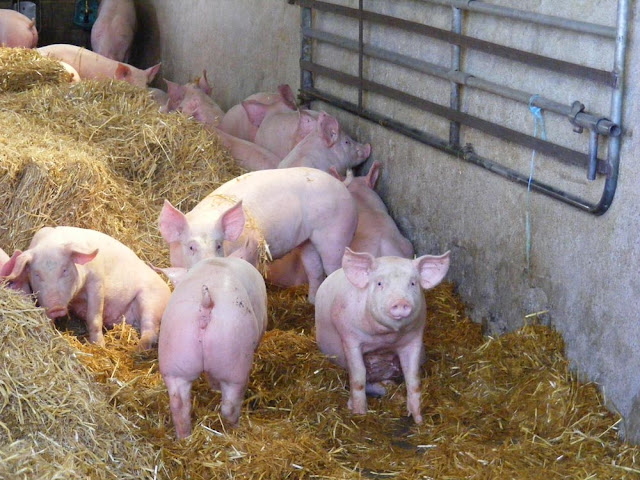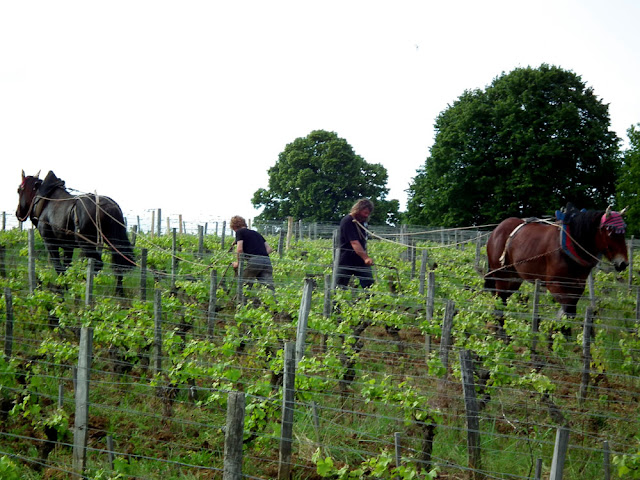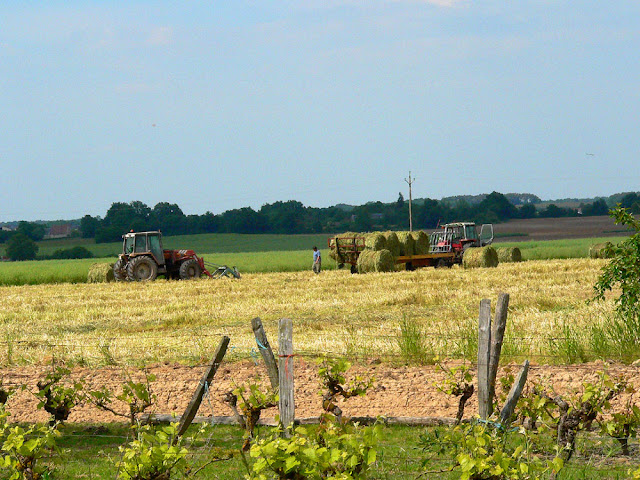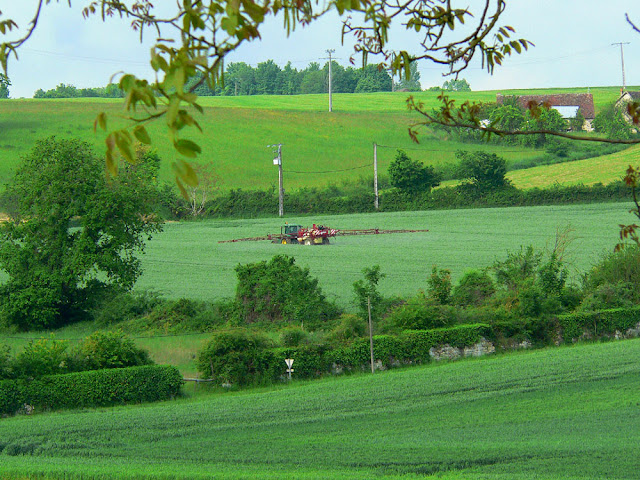The recently released agricultural census figures show a decline in the number of farms in Centre-Val de Loire, and a gradual increase in farm size in the region.
 |
| Limousin beef cattle near Yzeures sur Creuse. |
No one is very surprised. As with every assessment since 1970, this one shows an ongoing decrease in the number of farms.
 |
| Dairy cows near Charnizay. |
Fifty years ago, there were nearly 85,000 farms in the region, but there were only 25,000 in 2010. In 2020, the number of farms in the region fell to just under 20,000, which means that one in five farms have disappeared in ten years.
 |
| Young pigs near Betz le Chateau. |
The cessation of activities affects some sectors more than others. Thus, mixed farming, and sheep and non-bovine grazing and dairy have lost more than a third of their farms. In terms of numbers of farms, arable crops are the most affected, with 1,859 fewer farms, but this represents a decrease of only 13% in their sector. Beef and bovine grazing and dairy, viticulture, pigs and poultry, and fruit orchards have all declined. Only horticulture and market gardening has held its own, and even had a very small increase.
 |
| Dairy goats at Chaumussay. |
Livestock farming is declining because it is hard work and beginning to be unfashionable. Farmers are often no longer able to live off the income from their farm, and this is the main reason for the more general decline.
 |
| Harvesting wheat, with sunflowers in the foreground, near Azay sur Cher. |
These 'lost' farms are not just abandoned to nature though. The total area of farmland has only decreased by 1.2% in the last ten years, with farms getting larger and larger. The average farm has thus gone from 92 hectares in 2010 to 115 hectares a decade later in Centre-Val de Loire (compare with an average farm size of 4100 hectares in Australia).
 |
| Organic viticulture near Angé. |
Farmers are forced to expand to have an income. Agricultural prices are rather stagnant, or even decreasing, so the farmers hope for economies of scale by enlarging. In order to make the equipment they have invested in profitable, the farmer must have more surface area to work. Organic farmers particularly blame the European Common Agricultural Policy, which pays farmers on the basis of area of land rather than how the farm is managed. In short, the larger the farm, the more European funds it receives.
 |
| Farmyard, Roux. |
Many farmers are concerned about the industrialisation of processes and the concentration of ownership. They are trying to work at addding value, to be paid more for produce and to operate at a human scale. The majority of farms are still under 100 hectares, but with 20 hectares more on average since 2010, the trend is not reassuring. This is not the model that the organic farming organisations encourage, and they do not want it to be the model that the next CAP encourages.
 |
| Haymaking, near Preuilly sur Claise. |
The CAP is due to be reviewed next year. French farms are expected to receive 9 billion euros in subsidies for the period 2023-27, but disappointingly, once again, the signs are that there will be no significant changes to policy.
 |
| Harvesting wheat, near Preuilly sur Claise. |
One possible ray of hope is the development of certifications for quality and geographical origin. There are three times as many organic farms as 10 years ago (just under 8% of all farms), and one farm in eight has a quality or geographical origin label for their produce. There is also an indication that consumers are prepared to pay more for produce if it means farmers are better paid and thus able to make a living.
 |
| Crop spraying, near Preuilly sur Claise. |
The number of jobs in the agricultural sector has also declined over the past ten years, with the loss of one full-time equivalent in ten in the Centre-Val de Loire region. This decrease is linked to the decrease in the number of farmers (-21%), but not only. Mechanisation aimed at making each hectare as profitable as possible has also led to a decrease in the use of labour. Wages are often the single biggest expense for a farm. For many, reducing their labour costs is a way to keep their farms.
 |
| Crops and straw near Le Petit Pressigny. |
The farming community is hoping that the increased mechanisation and decrease in the drudgery of the work will appeal to the new generation. According to the 2020 census, more than one farmer in five is 60 years old or older in the Centre-Val de Loire region. The farming organisations and local authorities see promoting generational renewal as an urgent necessity.
 |
| Organic market garden near Preuilly sur Claise. |

2 comments:
This is America's story also, but on a more frightening scale. I don't have figures, but most farms are now agribusiness, huge and mechanized and employing machinery and chemicals instead of people. I don't really understand how the enormous costs of machinery and its upkeep can be cheaper than labor. Its a trend I am sorry to see in France, as it has not made things better in the U.S.
bonnie in provence
bonnie groves poppe: Things are still smaller scale here in France. Average farm size is half that of the US. Agribusiness here is the big farming co-operatives, mainly grain. So at least the farmers themselves get to influence the way farms are managed.
Post a Comment